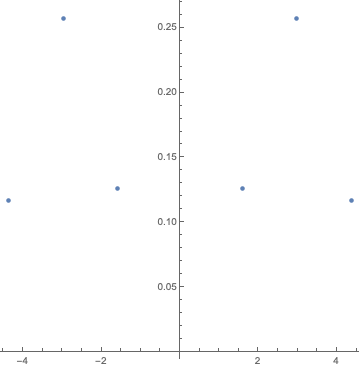EDIT: I simplified the question:
Let $N$ be a self-adjointnormal matrix and.
Now I consider a small perturbation of thisthe matrix by another diagonal skew-symmetric rank one matrix $A=-i \langle e_1,\bullet \rangle e_1$.
If both $N$ andmatrix $A$ were self-adjoint, we'd have the nice Weyl inequalities linking the eigenvalues of the sum.$A.$
The perturbed matrix $M:=N+A$ is not assumed to have any nice structure besides the fact that we assume that $\Im(\sigma(M)) \le -\delta$ for some $\delta>0$. Here, $\Im$ is the real part andperturbed matrix shall be called $\sigma$ the spectrum.$M=N+A.$
Moreover, weNow assume the following property:
Therethere is a normalized eigenvectorvector $v$ of$u$ such that $N$ with $\Vert A v \Vert \le \varepsilon$$\Vert (N-i\lambda)u \Vert \le \varepsilon$
for some $\varepsilon,$ i.e. one of the eigenvectors of$\lambda \in \mathbb R.$
Since $N$ is (almost) in the nullspace ofnormal this implies that $A.$$d(i\lambda,\sigma(N))\le \varepsilon.$
AlsoMoreover, I am equally interested in making the assumption thatassume that there is an approximate eigenvector $v$$\Re(\sigma(M)) \le -\delta$ for some $N$ such that
$$\Vert (N-\lambda)v \Vert \le \varepsilon \ \text{ and } Av=0.$$
The question:$\delta>0.$
If we assume additionally that $Au=0.$ Does all this give us any information about how large $\delta$ can be in terms of $\varepsilon$ or are these two parametersthey independent?
Put differently, can we conclude the existence of an eigenvalue of $M$ close to the real axis?
** Remark **: The big difficulty here is really to get the existence of eigenfunctions of $M$ supported (almost) away from $e_1.$ If anybody has an idea how to get this, please feel free to comment as well.
You may also consider the following example:
$$N= \left(
\begin{array}{cccccc}
0 & 0 & 0 & 3 & -1 & 0 \\
0 & 0 & 0 & -1 & 3 & -1 \\
0 & 0 & 0 & 0 & -1 & 3 \\
3 & -1 & 0 & 0 & 0 & 0 \\
-1 & 3 & -1 & 0 & 0 & 0 \\
0 & -1 & 3 & 0 & 0 & 0 \\
\end{array}
\right)$$ and $A$ as above then the eigenvalues are  and as you can see, they are quite close to the real axis, i.e. much close to the real axis than $\Vert A \Vert=1$.
and as you can see, they are quite close to the real axis, i.e. much close to the real axis than $\Vert A \Vert=1$.
